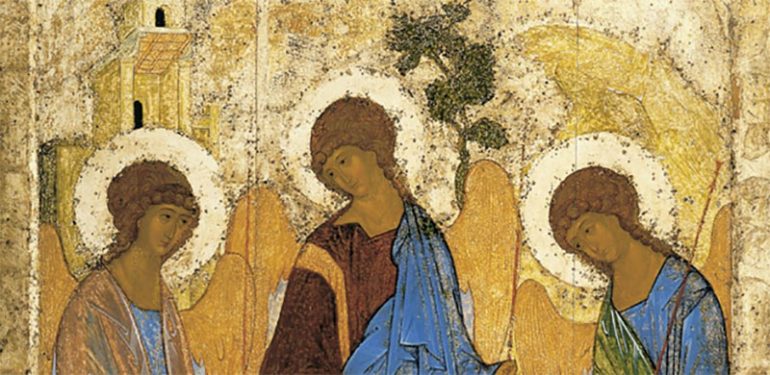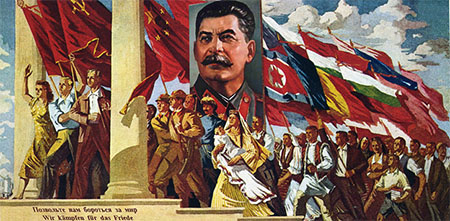When people look at the list of the Old Masters one thing people would notice is how it is mostly Italians followed by the Dutch, Germans and the French in no particular order. But what about other countries? What about Russians for example? Their recorded history is before 1000 A.D. and that’s already more than a century ahead of the oldest of masters. Surely a country with such grand history would have artists to boast and would have been a well known Old Master.
Well, yes. They do have Old Masters too: Andrei Rublev and Dionysius. Russia’s art is even older than their recorded history and for a country that boast that old a history would had to have their share of famous artists. There are probably more than two, but Rublev and Dionysius are the ones more well-known.
Russia’s taste for art is, like mentioned earlier, is older than their history. The Venus of Kostenky is a carving made of mammoth bone and dates back to 23,000 BCE. Before the Greeks dominated the art world in Europe, the Russian goldsmiths have already been making fine metalworks like the Gold Bull of Maikop. It is believed that their skills were directly inherited from the Mesopotamians through a Lebanon trade route. Following that Russia also welcomed Celtic tribe immigrating from the West, who brought in metalworkers specializing in iron.
By the time of 450 CE the Russians have Byzantine Art and remained almost unchanged for centuries despite of the political climate of Europe and Asia that includes several wars, racial migrations and Mongol invasions. The Church of Russia, the Eastern Orthodox Church, helped preserve the Byzantine style. When Prince Vladimir welcomed Christianity in 988 CE it would be the Byzantine style that would make their mark on the churches of Russia. The Cathedral of St. Sophia is one such example. It was also in Russia that the use of icons helped the emergence of iconostasis. The Virgin of Vladimir in the Tretyakov Gallery in Moscow is one such example of this Russian-based art. It was in 1140, in the Monastery of St. Cyril, when the Russians would start putting more Russian elements into their paintings. It was also in this era that the Novogorod School came to be. This is the art style that produced masters Rublev and Dionysius, along with Theopanes the Greek.
Art under the blood-thirsty and barbaric Mongols, after they destroyed Moscow, was a mix of Middle Eastern and Chinese-Indian art. The Mongols have complete control from Poland to West Philippine Sea. Islam was accepted by the western Mongols while Buddhism was accepted by their Eastern counterparts. Russian architecture took a more Asian and colorful look. The Novogorod school escaped destruction and influence though, and endured past until the Mongol power faded from Russia.
The Ottomans attacked Constantinople in 1456, under the command of Mahommed II, and completely destroyed the city. The Byzantine art was inherited completely by the Russian and Greek monks, hidden away in their monasteries. Princess Sophia, who was a niece of the last Byzantine ruler married Ivan III. It was he who added the double-headed eagle, the symbol of Greek emperors to their flags, and declared himself the Grand Duke and ruler of all Russia. It was in his and his son’s (Ivan the Terrible) rule that the Muscovite style was born. Those colorful onion-shaped domes in those Russian postcards we so like are called the Imperial Roofs and they were made in this era, first started by the Italian architect Aristotile Fioraventi which was commissioned by the autocracy. He was soon followed by other Italians into Russia. The Byzantine-Italian Renaissance was born in Russia. Faceting was introduced into Russia. Still, the insides of the cathedral and churches remained Byzantine-Russian.
Icon painting was the dominating style in Russia when it comes to the realm of painting. Iconostasis is everywhere. Derived from the original Byzantine mosaics and frescoes, the Russians found out earlier that painting on the wooden walls of the Russian churches was impractical. This led to the art being put into icons instead. The Russians desired to preserve their works, so icon painting evolved into iconostasis. The artists were monks, who considered their art as a way to praise and worship God. The finest works regarded were, however, from the enduring Novogorod School.
The Novogorod School finally left the Russian painting scene after enduring for almost 400 years, replaced by the Muscovite artstyle. And then, something funny happened: A fire destroyed a lot of icons in 1547 and the Tsar had to employ artists from Novogorod and Pskov. But this didn’t sit well for a priest, Viscovati, who was also a clerk to the Tsar’s council. He complained that the art the new artists were making had deviated from the traditional and demanded the icons to be examined by the council along with Ivan the Terrible’s favorite clerk, Silvester.
What happened was one of the earliest examples of censorship in art in the western world. The Church found the icons did not adhere to the “authorized” versions of the scenes depicted.This annoyed the hell out of the artists when they also found out that the very clerics who are policing their art do not object to portraiture, known then as Parsunas, which isn’t traditional. This is the very same “rules for thee, but not for me” mentality we see in today’s US’ political left. It was so bad and hypocritical. Nikon, a patriarch that’s known to hate Western art and would usually confiscate and burn such works, was known to have sat for his portrait. More than once in fact.
Art moved from just purely religious to finally include portraiture, though still influenced by the older styles. Ivan the Terrible established the first art workshops in the Palace of Arms around 1533 to 1584. It was here that Muscovite icon painting flourished.
Jumping forward to the 18th century we see the dominance of portrait painting in Russia. It was at this time that the Russian Imperial Academy of Arts was established under the rule of Peter the Great. There are a lot of famous painters in Russia at the time. People like Ivan Nikitin or Alexei Antropov made their names made their names known in this era. By the 19th century we got artists doing religious, landscapes, historical and still lifes in Russia. Russian landscape art, for example, comes in Italian and authentic Russian flavors. Artists like Maxim Vorobiev and Silvester Shchedrin all had works influenced by Italians while artists like Alexei Venestianov and Nikifor Krylov had a more Russian feel to them.
By the 20th century the Russian art scene in chaos. The fall of The Society for Itinerant Exhibitions led to the creation of smaller art societies. Art styles in Russia included Realism and Impressionism. Abstract art also made an appearance as the avant-garde ideas flowed from Paris.
A lot of Russians left Russia when war came. World War I led to the death of the last Tsar and his family under the hands of the Revolution. Under Stalin’s rule, Socialist Realism was enforced by the tyrannical gov’t. After Soviet fell, art became lax again in Russia.
But the Russian art world will go on. It outlived countless wars, murders, genocides and are still producing great artists, like Konstantin Lupanov. It might not have as much masters as Italy but it had developed its own unique styles which are one of the best in the world.
Photo Attribution:
Featured and 1st image by Rublev’s Holy Trinity Icon, <a href=”https://iconreader.files.wordpress.com/2011/02/rublev-angels-at-mamre-trinity1.jpg”>via Iconreader</a>
2nd image by Socialist Realism art, <a href=”https://upload.wikimedia.org/wikipedia/commons/thumb/4/4d/%D0%9F%D0%BE%D0%B7%D0%B2%D0%BE%D0%BB%D1%8C%D1%82%D0%B5_%D0%BD%D0%B0%D0%BC_%D0%B1%D0%BE%D1%80%D0%BE%D1%82%D1%8C%D1%81%D1%8F_%D0%B7%D0%B0_%D0%BC%D0%B8%D1%80.jpg/1200px-%D0%9F%D0%BE%D0%B7%D0%B2%D0%BE%D0%BB%D1%8C%D1%82%D0%B5_%D0%BD%D0%B0%D0%BC_%D0%B1%D0%BE%D1%80%D0%BE%D1%82%D1%8C%D1%81%D1%8F_%D0%B7%D0%B0_%D0%BC%D0%B8%D1%80.jpg”>via Wikipedia</a>

